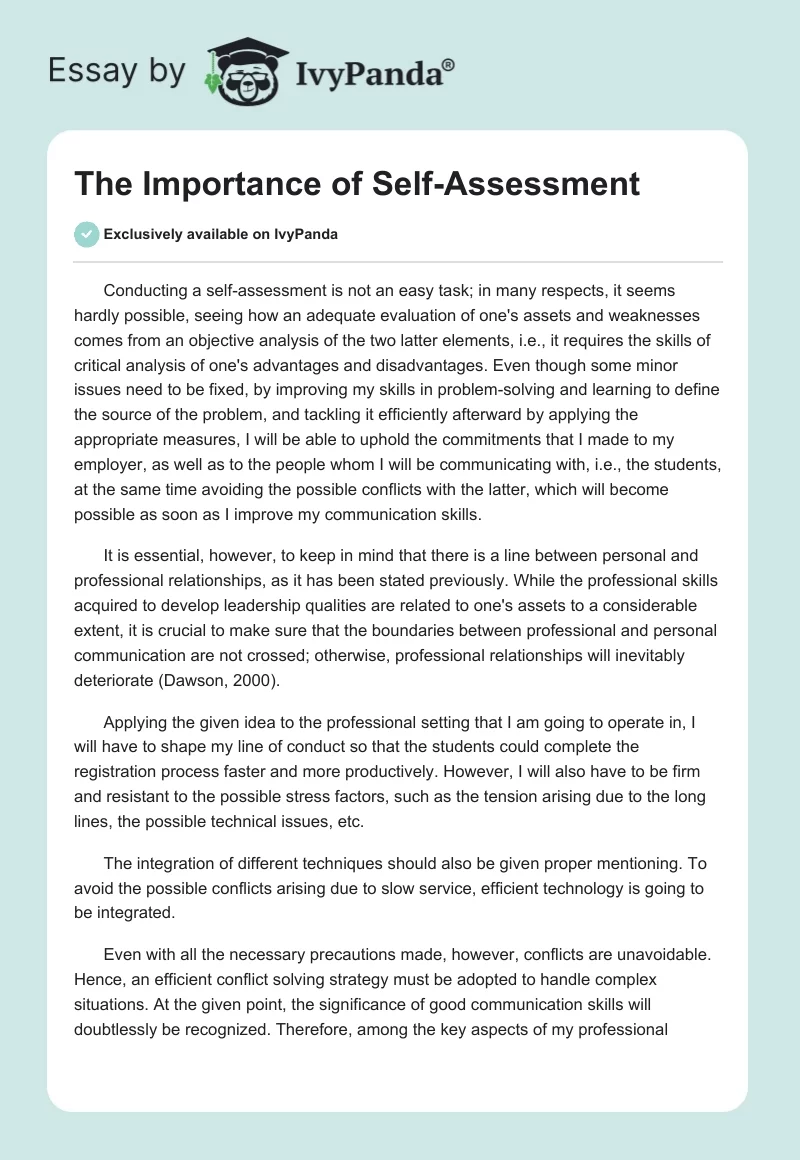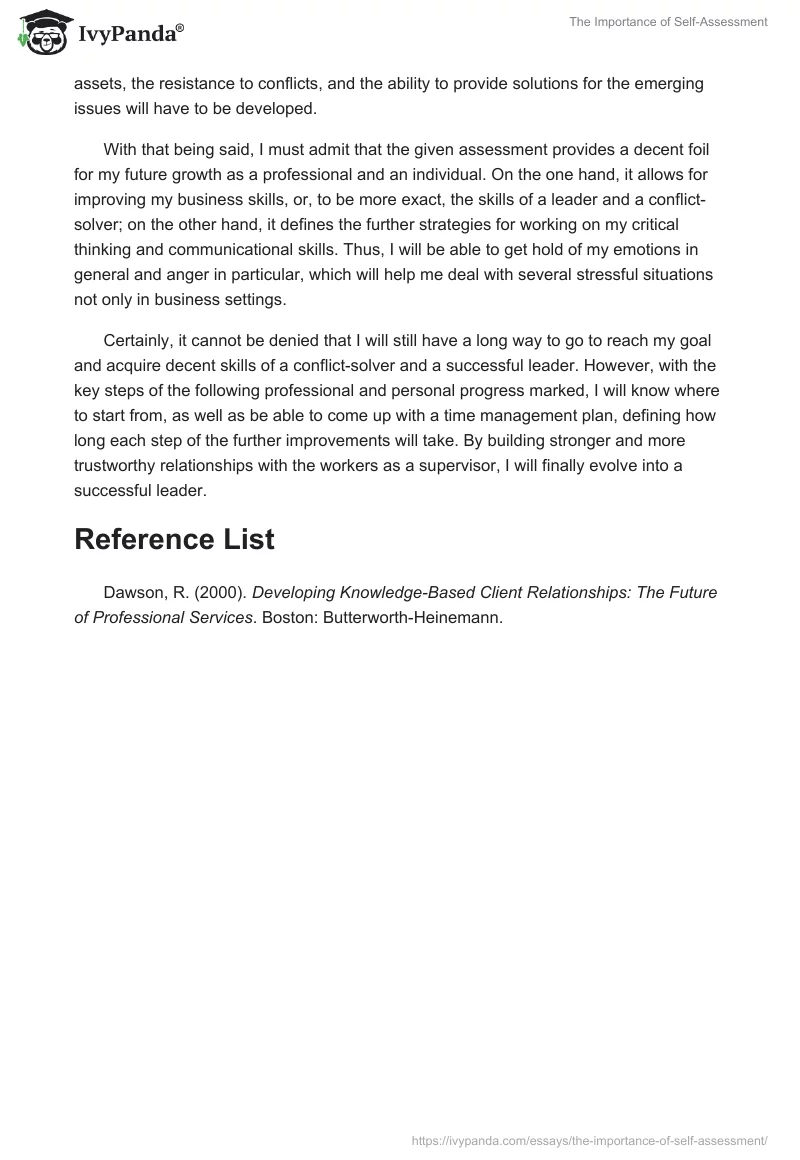Conducting a self-assessment is not an easy task; in many respects, it seems hardly possible, seeing how an adequate evaluation of one’s assets and weaknesses comes from an objective analysis of the two latter elements, i.e., it requires the skills of critical analysis of one’s advantages and disadvantages. Even though some minor issues need to be fixed, by improving my skills in problem-solving and learning to define the source of the problem, and tackling it efficiently afterward by applying the appropriate measures, I will be able to uphold the commitments that I made to my employer, as well as to the people whom I will be communicating with, i.e., the students, at the same time avoiding the possible conflicts with the latter, which will become possible as soon as I improve my communication skills.
It is essential, however, to keep in mind that there is a line between personal and professional relationships, as it has been stated previously. While the professional skills acquired to develop leadership qualities are related to one’s assets to a considerable extent, it is crucial to make sure that the boundaries between professional and personal communication are not crossed; otherwise, professional relationships will inevitably deteriorate (Dawson, 2000).
Applying the given idea to the professional setting that I am going to operate in, I will have to shape my line of conduct so that the students could complete the registration process faster and more productively. However, I will also have to be firm and resistant to the possible stress factors, such as the tension arising due to the long lines, the possible technical issues, etc.
The integration of different techniques should also be given proper mentioning. To avoid the possible conflicts arising due to slow service, efficient technology is going to be integrated.
Even with all the necessary precautions made, however, conflicts are unavoidable. Hence, an efficient conflict solving strategy must be adopted to handle complex situations. At the given point, the significance of good communication skills will doubtlessly be recognized. Therefore, among the key aspects of my professional assets, the resistance to conflicts, and the ability to provide solutions for the emerging issues will have to be developed.
With that being said, I must admit that the given assessment provides a decent foil for my future growth as a professional and an individual. On the one hand, it allows for improving my business skills, or, to be more exact, the skills of a leader and a conflict-solver; on the other hand, it defines the further strategies for working on my critical thinking and communicational skills. Thus, I will be able to get hold of my emotions in general and anger in particular, which will help me deal with several stressful situations not only in business settings.
Certainly, it cannot be denied that I will still have a long way to go to reach my goal and acquire decent skills of a conflict-solver and a successful leader. However, with the key steps of the following professional and personal progress marked, I will know where to start from, as well as be able to come up with a time management plan, defining how long each step of the further improvements will take. By building stronger and more trustworthy relationships with the workers as a supervisor, I will finally evolve into a successful leader.
Reference List
Dawson, R. (2000). Developing Knowledge-Based Client Relationships: The Future of Professional Services. Boston: Butterworth-Heinemann.


